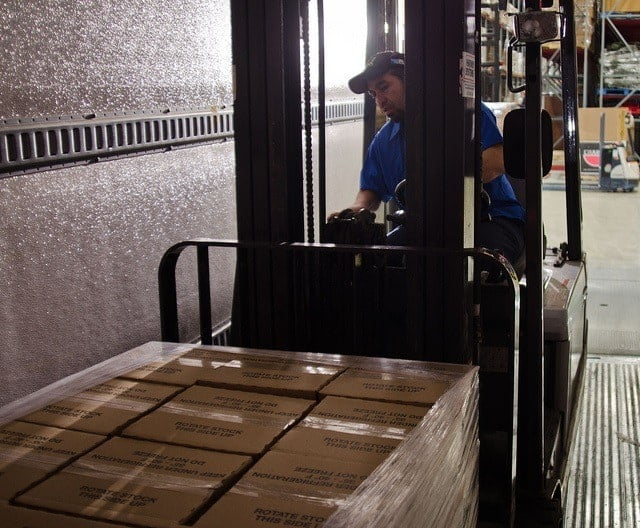Many businesses today count on some form of pallet racking for inventory management and control. Due to innovation, more ways exist than ever. In order to shed light on the issue, we are going to look at the positives and negatives of the various styles of pallet racking.
First off, let’s look at the key factors, the ones that will be most important in making your descision as to which type of system to use:
- Amount of floor space available
- Ceiling height
- Types and sizes of pallets to be used
- Variety of products to be stored
- Length of time they will or may be stored
- Products‘ shelf life
- Total budget allotted for pallet racking

The simplest solution is simply to store everything on the floor, however, this is very impractical, as it can easily become difficult or confusing to access your inventory. Also, this is a very poor use of space, especially if you have high ceilings to take advantage of.
Beyond this, you can have a selective pallet rack. This allows you to use the ceiling to your advantage, does require more equipment to store and access, but the organizational aspects of it are well worth it. These are usually just one-deep systems but sometimes can be two deep.
If you are absolutely swimming in inventory, you will probably need a more complex solution, one that will allow for much greater storage depth. Here is where you have to decide on LIFO (Last In First Out) vs FIFO (First In First Out). FIFO is very crucial for inventory with a limited shelf life. For products that have a very low degree of perishability and are all the same, LIFO solutions can often save you money.
These systems often use conveyor belts, and sometimes take advantage of gravity to have the pallets “flow” on them, hence the name “pallet flow”. Obviously the level of infrastructure required here is getting more and more, but the benefits are often more than worth it.
At the extreme end are completely mechanized systems that move everything with controls. Some high-end systems these days are even loaded and unloaded by remote control with robots, although in this world the forklift (driven by a good forklift operator) is still king here.
For more info, you can always go here if you want a more comprehensive read on the subject.

